Affiliate disclosure: This post may contain affiliate links. Please see our Privacy Policy.
Mullein is easy to identify and abundant, and it’s a favorite of folk herbalists everywhere. It’s known for its potent medicinal properties, and is usefully in treating all manner of illnesses from cough and bronchial complaints, to ear infections, cuts, and scrapes.
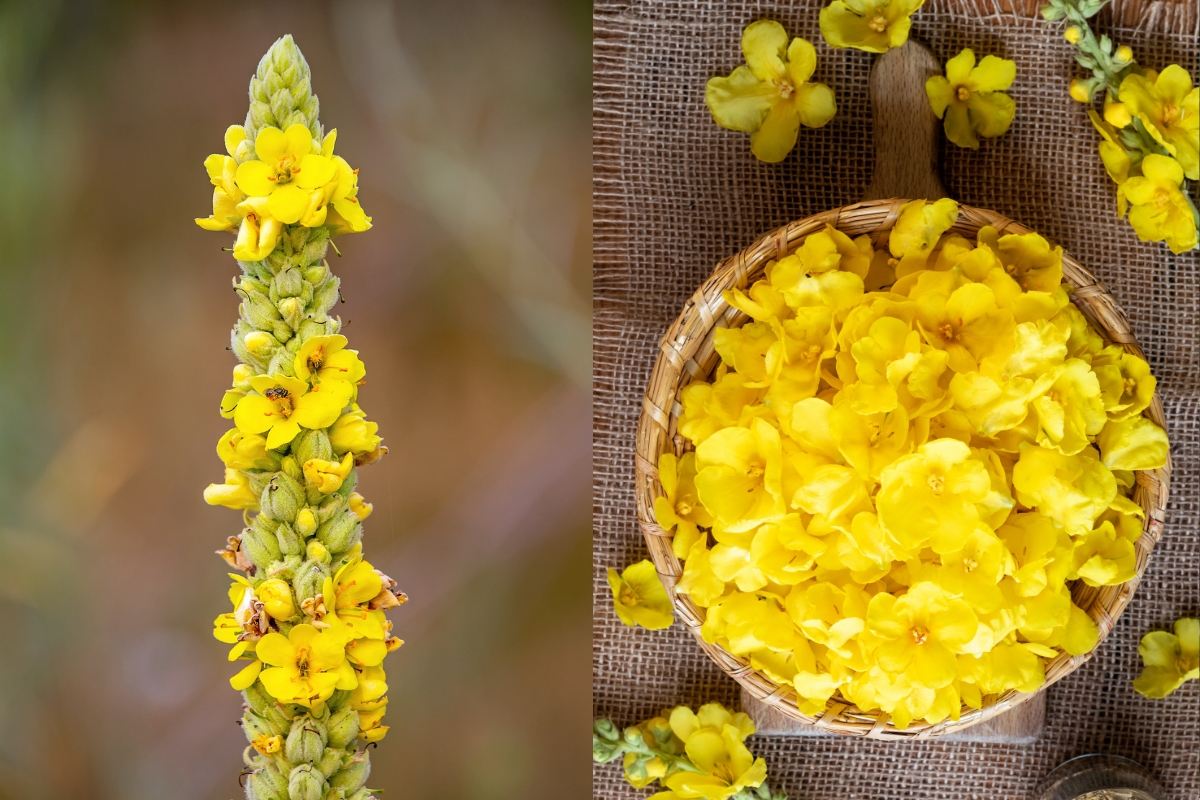
Table of Contents
- Identifying Mullein
- Mullein Medicinal Uses
- Mullein Uses
- Mullein Oil for Earaches and Ear Infections
- Mullein Tincture for Bronchitis
- Mullein Tea for Chest Congestion
- Smoking Mullein for Respiratory Ailments
- Mullein Oil for Swollen Joints and Arthritis
- Mullein Liniment for Sore Joints
- Mullein Salve for Insect Bites
- Mullein Poultice for Stings or Bites
- Mullein Compress for Menstrual Cramps
- Infuse Mullein and Calendula to Heal Wounds
- Historical and Survival Uses
- Ecosystem Benefits
Mullein is frequently called the Candlewick Plant, Old Lady’s Flannel, and Beggar’s Stalk, but the scientific name is Verbascum thapsus. With over 200 species of mullein growing in the United States, you should have no problem tapping into its antiviral and antibacterial properties.
In recent years, people started to use mullein to take care of ear infections, but mullein tea and mullein tinctures have been used for centuries to treat respiratory and lung ailments. The leaves, flowers, and roots of the plant all hold medicinal properties.
We can trace the use of mullein as a medicinal use for centuries. Even though you won’t find too many clinical studies that focus on its efficacy, herbalists know that it’s a potent choice for different ailments.

Identifying Mullein
If you live in USDA zones three through nine, you can grow mullein, and you might find it growing wild in your area. Mullein is a biennial plant in all of these areas, meaning that it typically flowers in the second year and lives a minimum of two years in your garden.
Mullein is often easy to identify in the fields and on the roadside. They are tall plants with giant spikes of yellow flowering rosettes. These large, erect plants have huge, furry leaves that are fuzziest in the spring. Many gardeners grow mullein because the foliage and flowers are beautiful and attract pollinators to the garden.
Whether you forage wild mullein or grow it in your herb garden, you’ll find that it’s easy to identify. You’ll find it growing in most pastures, along roadsides, in fields and gullies, as long as the area has full sunlight. Mullein needs plenty of sunlight each day and it self seeds, dropping seeds in the fall that will germinate and sprout in the spring.
The best time to forage mullein leaves is springtime; you want to harvest them before the flower stalks shoot up when the temperatures increase. You can harvest the leaves from the stalk when it’s matured, but the young leaves are best.
This guide will help you identify mullein in the wild.
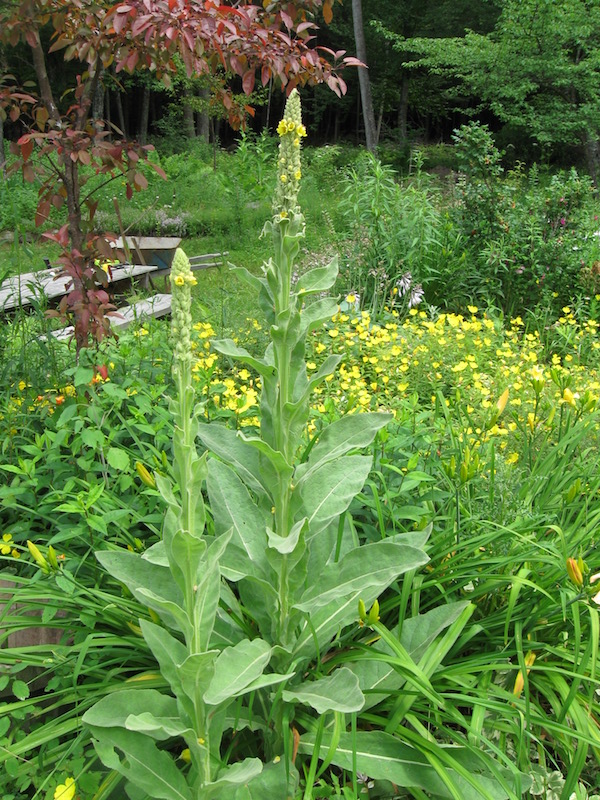
Harvesting Mullein
It’s best to cut the leaves and tops of the mullein plant, leaving the roots because the plant will come back in the next year.
The best time to harvest mullein flowers is during the summer and the early fall as they start to open on the plant. You can cut off the whole flower stock in the late summer before the flowers turn brown. Once the flowers are brown, they lose some of the potency of their medicinal properties.
Mullein roots also have medicinal properties, but make sure there are plenty in the area that will continue to grow. If you grow mullein, you’ll want to wait until you have other plants growing before you harvest the root of mullein plants.
No matter when or how you harvest mullein, you should allow your herb to dry by keeping the plant or leaves near a window. You also can use a drying rack or dehydrate them in a dehydrator. If you harvest mullein, make sure you wash the roots well and allow them to dry and cure for at least a week.
Once dried, mullein stores well for up to 18 months in an airtight container.
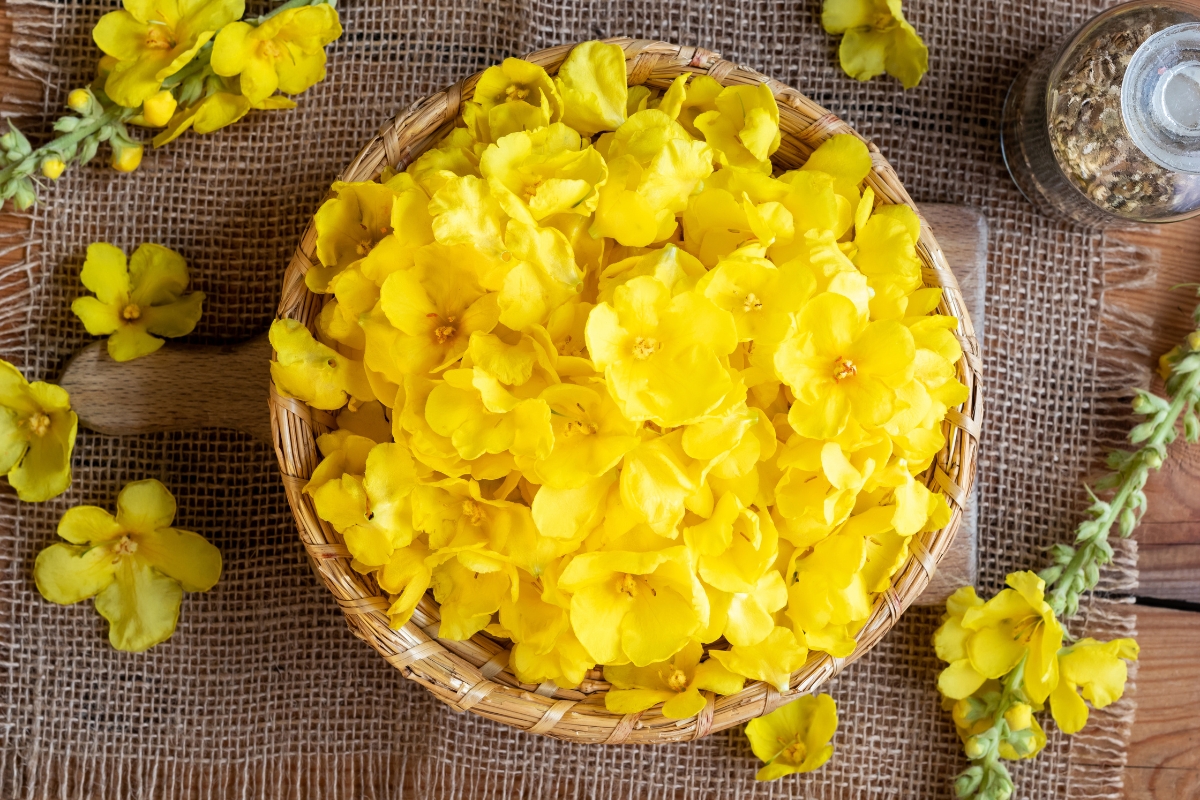
Mullein Medicinal Uses
Herbalists love mullein because it’s known to have several medicinal properties that can cure different ailments. It’s been used extensively, and while doctors might not prescribe it to you, we know that it has valuable properties.
Some of the medicinal properties of mullein include:
- Antibacterial
- Antiviral
- Anti-inflammatory
- Anti-influenza
- Emollient
- Demulcent
- Expectorant
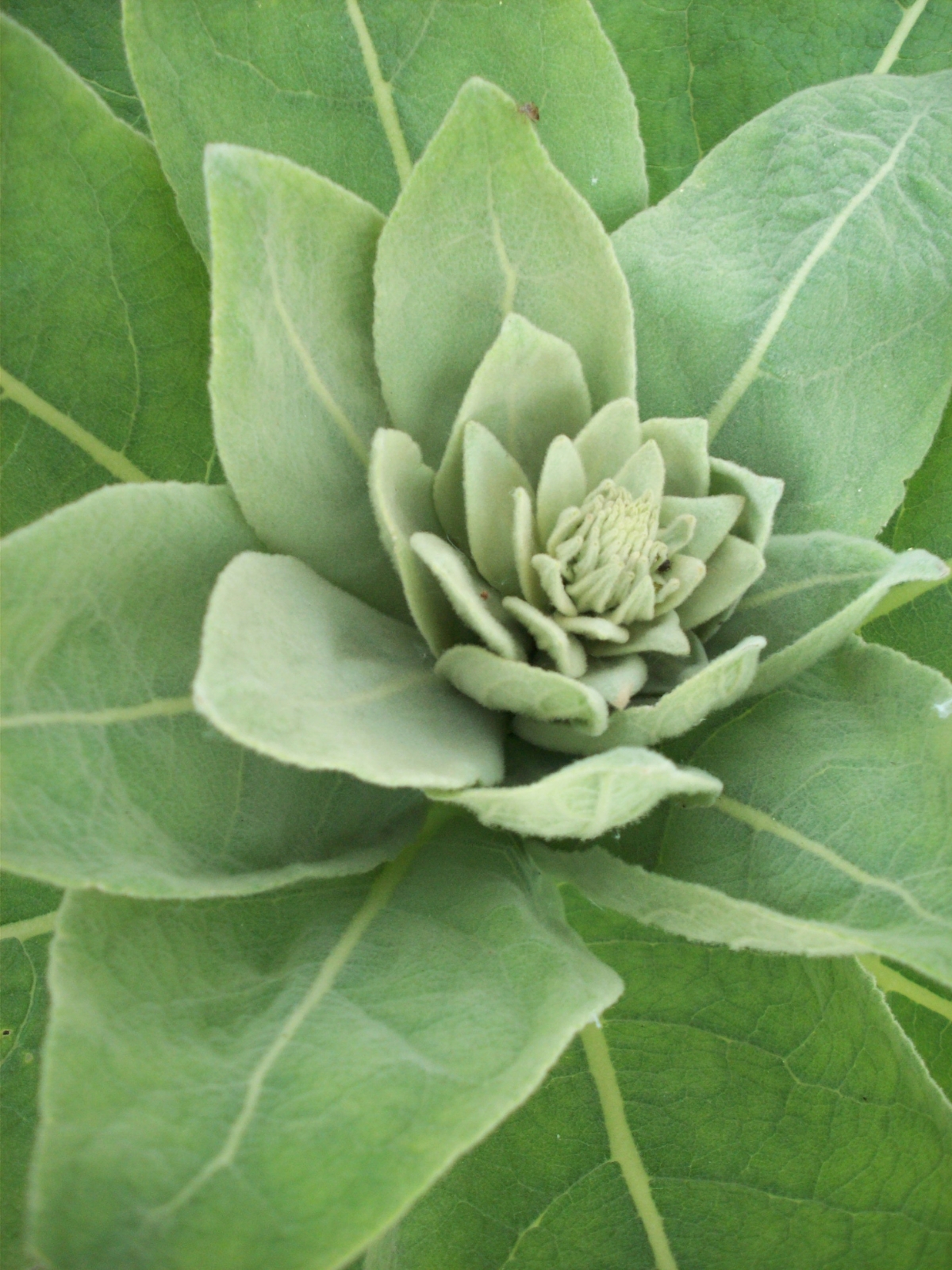
Mullein Uses
With all of these excellent medicinal benefits, mullein can be used in many different ways. For example, you can use it to treat pneumonia, chest congestion, urinary tract issues, asthma, gout, and muscle spasms.
Here are some ways to use mullein in your herbal medicinal cabinet.
Mullein Oil for Earaches and Ear Infections
Without a doubt, most people start by trying to use mullein oil to treat earaches. As a mother, I can tell you that nothing is worse than hearing your child cry because of their earache pain. It hurts them, and it breaks your heart because you know they’re miserable.
Mullein oil is one of the best ways to homemade ways treat an earache, and you only need four ingredients to treat it. It’s made best with fresh flowers, but if you don’t have access to fresh mullein, dried works. You also need garlic, olive oil, and vitamin E oil.
Making mullein oil for earaches is so easy. All you have to do is put the flowers at the bottom of the jar and add coarsely chopped garlic on top of the flowers. Next, cover the garlic and mullein flowers with olive oil and put them in a crockpot to heat the jars. Once strained, it stores well for up to a year in a cupboard.
Mullein Tincture for Bronchitis
Mullein tincture relaxes the bronchial tract and helps to loosen up any mucus in your chest. If you have bronchitis or an upper respiratory infection, mullein tincture is an effective choice to help you feel even better.
The good thing about mullein tincture is that it also can be used with children as a cough remedy. So if your kids have a cold, try giving them a mullein tincture or a mullein glycerite, a sweeter choice.
Making a mullein tincture takes several weeks. First, the mullein leaves need to soak in the vodka (or whatever alcohol you use) for two to three weeks, allowing all medicinal properties to steep into the alcohol. Then, strain out the herbs and store the tincture in a clean jar to use later.
Mullein Tea for Chest Congestion
Do you have chest congestion or an inflamed throat? Mullein tea is the solution! Making a mullein tea or infusion is an effective herbal preparation that treats these problems.
This works because mullein breaks up mucus in the nose and throat, making it easier to expel from your body. If you have a stuffy nose, this is a great choice, and it’s an expectorant, relaxing the passages in your lungs to relieve coughs but making it more effective when you do cough.
Some herbalists swear by grinding up the leaves and filling capsules with them if you don’t want to drink mullein tea. I like drinking the tea, sweetening it with a bit of honey, for a sore throat. It helps!
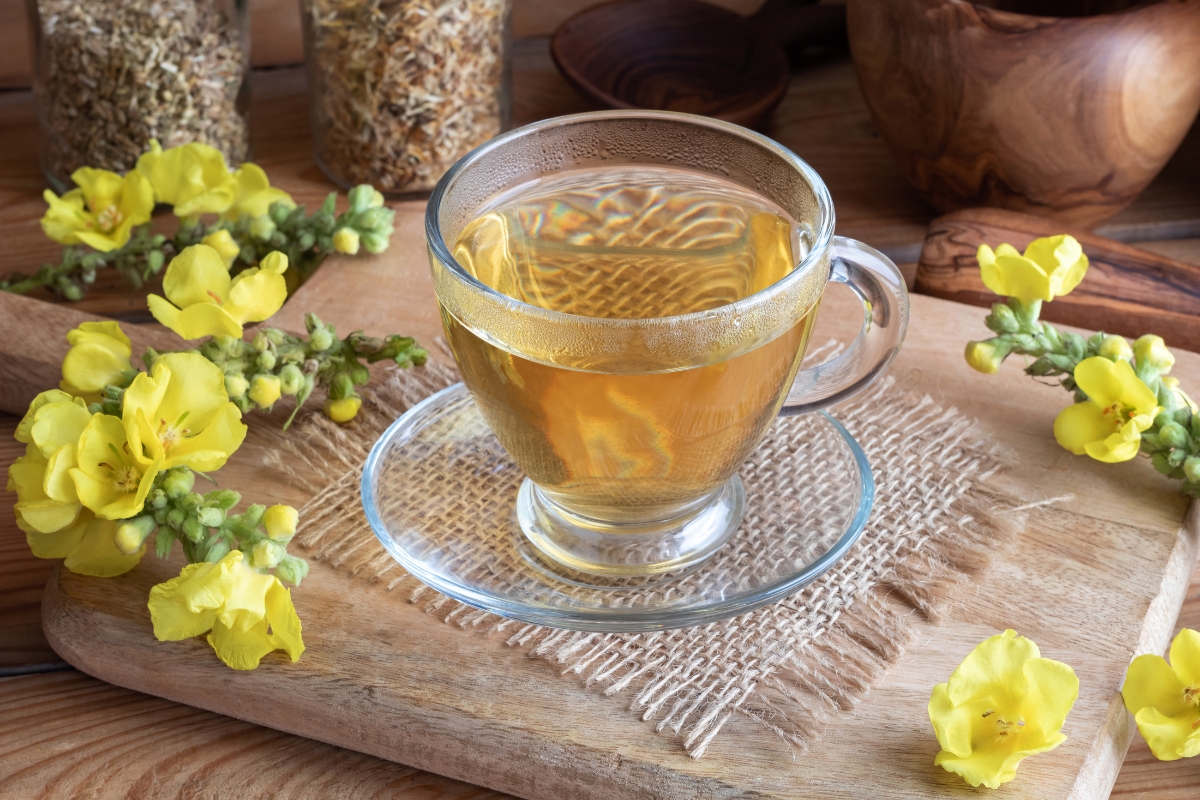
Smoking Mullein for Respiratory Ailments
Mullein is well-known for its antibacterial properties, and one way you can treat respiratory infections is to smoke mullein. This is the most common way to use mullein throughout different cultures and history.
Herbalists say that while it’s not recommended to smoke mullein daily, it has been used to treat respiratory ailments, such as bronchitis, pneumonia, asthma, and influenza.
When you smoke mullein, the leaves are dried and often combined with other herbs, such as thyme and peppermint. The herbs are shredded and crushed together in a mortar and pestle and then wrapped into rolling paper or smoked in a pipe.
Mullein Oil for Swollen Joints and Arthritis
Mullein has anti-inflammatory properties, so you can use it to treat swollen joints and arthritis. Making mullein oil is so easy, and it can be rubbed over your sore joints and covered with a dry dressing.
If you’re looking for different easy ways to use mullein, I suggest making mullein oil. Take a clean jar and macerate the flowers in oil, and let it sit in a warm place, such as a window sill, for two weeks. Then, strain out the leaves and store them.
Mullein Liniment for Sore Joints
Another option to treat sore joints is to make an herbal liniment with mullein. If you’ve never made a liniment, don’t be scared off by this herbal preparation. It’s easier than you think. A liniment is an herbal remedy used topically to alleviate sore muscles, joints, and soft tissues. It’s typically made with witch hazel, rubbing alcohol, or apple cider vinegar.
Make a mullein liniment by boiling cider vinegar and pouring it over mullein leaves. Let this steep for 30 minutes before you strain out the leaves. Then, you can rub this over the swollen joints.
Mullein Salve for Insect Bites
After you have herbal mullein-infused oil, you can use this to make a mullein salve. This would be great for insect bites, swollen glands, and bruises because it helps with inflammation.
Mullein Poultice for Stings or Bites
If you’ve never made a poultice, don’t feel intimidated by the process. All you have to do is grind up the dried flowers or leaves (or both) into a powder and mix it with water to create a paste.
Spread your created poultice over the affected area, and then cover it with gauze. Another option is to wrap it with plastic wrap to stop the poultice from making a mess.
Mullein Compress for Menstrual Cramps
No one likes having period cramps – it’s seriously the worst. However, since mullein helps with inflammation and sore muscles, you can use it to take care of menstrual cramps.
Start by making a really strong cup of mullein tea; this is often called an infusion. All you have to do is let the herbs steep longer in the boiling water, typically 30 minutes to one hour. Then, strain out the leaves and dip in a clean cloth, squeezing out the excess. Lay this over your stomach and redip whenever it cools down.
You’ll love this method to get rid of menstrual cramps!
Infuse Mullein and Calendula to Heal Wounds
Another one of the ways to use mullein is to promote skin healing with it. The best way to use mullein for wound healing is to make mullein oil, exactly like you’d make it for sore joints and arthritis. However, to make it more effective, try mixing it with calendula flowers.
Together, these two medicinal herbs will be able to heal minor wounds and cuts effectively. Use this liberally on scrapes, wounds, or even burns!
Historical and Survival Uses
Mullein has a long history of being cultivated as a medicinal herb. We know that it’s been used for centuries, partly because it’s so easy to grow, even if you have poor soil. That’s why mullein is considered an invasive species; it’s not picky about where it grows.
Looking back at history, a clinical trial in the 19th century showed that mullein helped treat tuberculosis, and it was used in hospitals throughout Ireland as a trusted treatment.
Historically, we see that mullein has been used across many cultures, including the Native Americans, Europeans, Asians, and throughout desert regions in Egypt, Ethiopia, and India. They used it to treat skin and lung problems in humans and cattle. Some cultures smoked mullein for asthma, but we now know that smoking and asthma doesn’t mix well.
Our ancestors used mullein for more than medicinal uses. This herb produces tall stalks, and they would dip the stalks and seed heads in wax and use them as torches. Likewise, you can collect the dried leaves and seed pods, using them as tinder or fire starter.
The Native Americans believed that mullein was a tobacco alternative. They harvested the entire plant by pulling it out of the ground and hanging it to dry, similar to tobacco plants. You could give it a try as well because smoking mullein has several health benefits.
Another historical use of mullein is as a natural dye plant because it’s rich in tannins and flavins. You can use it to dye fabric a beautiful, golden yellow.
Believe it or not, our ancestors used mullein leaves as a substitute for toilet paper. The leaves are wide and large, making them perfect for wiping, and they’re fuzzy. That might feel a bit strange nowadays, but it was a great option before toilet paper was a thing.
Some people used to put mullein leaves in their shoes for cushion and warmth. Outdoor enthusiasts say that you can use mullein as an emergency blanket if you’re stuck outdoors.
Mullein is considered toxic to many different livestock, including fish. The seeds are toxic to fish, so fishermen would take the seeds and use them to shock fish. Then, they’d scoop them out of the water and eat them.
Ecosystem Benefits
Not only does mullein have medicinal and historical uses, but growing mullein in your garden also has ecosystem benefits for your garden. That’s reason enough to plant this herb and to let it grow in the wild.
Here are some of the ecosystem benefits of growing mullein.
Attracts and Feeds Pollinators
One of the main ecosystem benefits of mullein is that bees enjoy the flowers for pollen. Planting mullein near your beehives provides bees with food, but even if you don’t have hives, the flowers attract bees and other pollinators to your garden. That helps with the pollination of your plants.
Feeds the Birds
Mullein is a biennial plant that drops seeds after the flowers dry and die. That’s why it readily self-seeds, and it’s considered an invasive species in many areas. Not only do the seeds help to spread this wild herb, but birds love to eat the seeds. It provides them with food in the fall.
Reduces Soil Erosion
Another ecosystem benefit that you might not realize is that, since this is a perennial plant, it helps with soil stabilization. Soil erosion is a problem in many areas, including your garden; you really don’t want to have bare soil in your garden. Since mullein is a perennial and spreads, it helps to stabilize the soil and keep it in place.
Helps in Areas with Heavy Predation
Mullein is considered toxic to many different livestock, and these animals are aware that eating this plant isn’t such a good idea. Goats and deer will avoid the plant, so if you have areas with heavy predation, planting mullein is a good deterrent.
Improves Soil
Mullein is known as a nitrogen fixer for soil, so if you plant it in an area that you know has problems with nitrogen levels, it helps to add nitrogen and balance it out. Despite thriving in poor soil, this herb is known to heal bad soil conditions. Then, later, you can plant things here that love extra nitrogen in the garden.
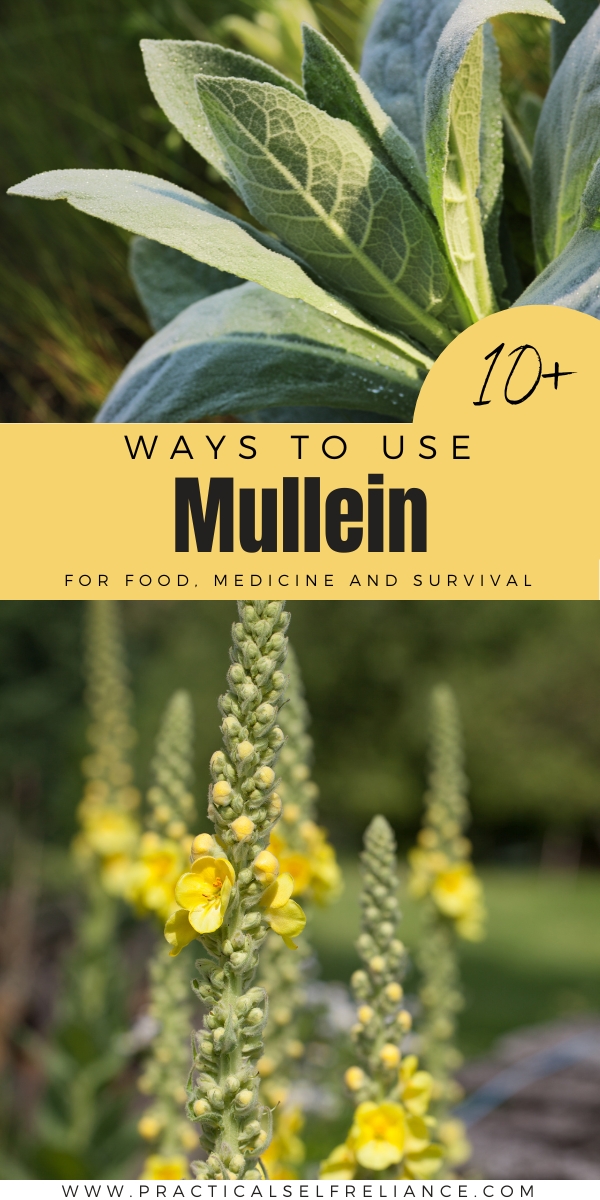
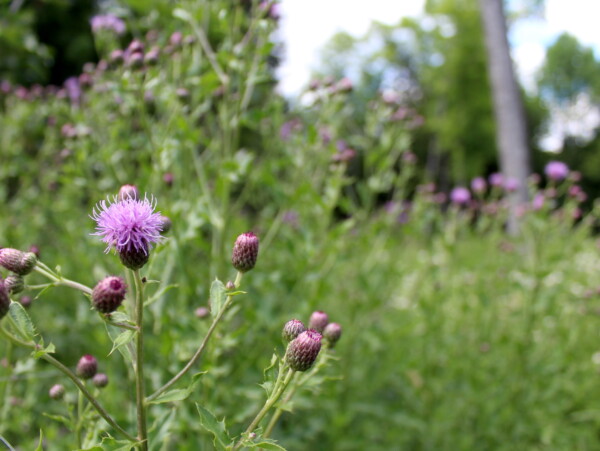
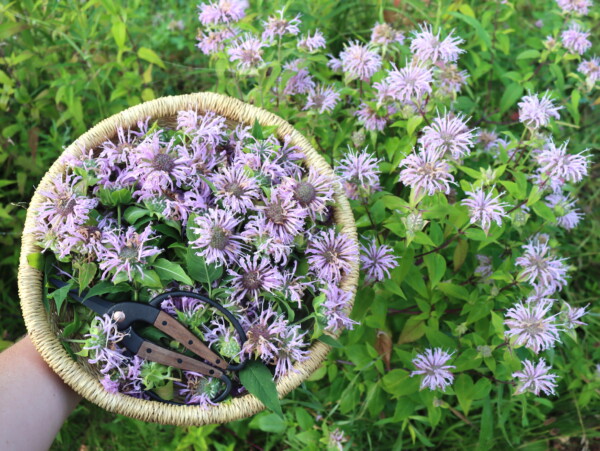

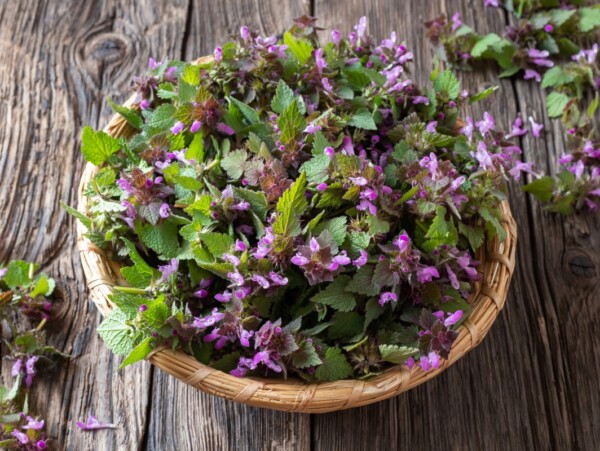





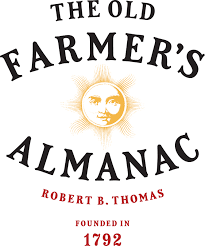

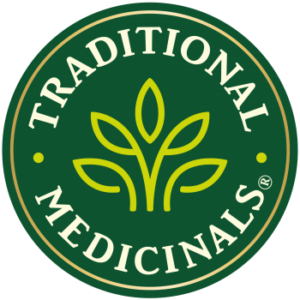


Thank you for the valuable information. I would love to learn how to use nature as my medicine cabinet. Your directions for tinctures, salves, teas, etc., are clear and understandable for a novice like me.
I have made mullein tincture with 95% Polish Vodka. How many drops can I take (in water)?
I’m not a clinical herbalist and I can’t give you specific dosages unfortunately. In general, tinctures are often taken at a rate of 1-2 droppers full two to three times a day, but that can vary substantially based on your individual conditions. Sorry I can’t be more help here.